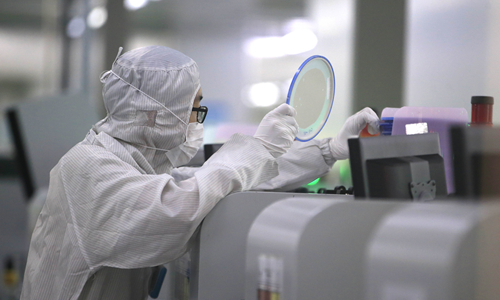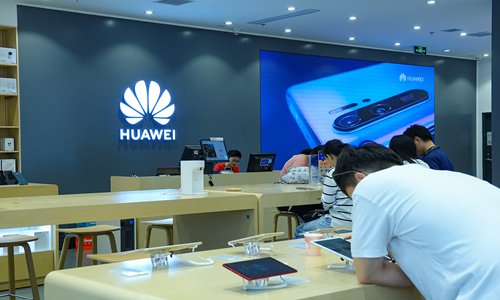From global times As I said Chinese semiconductor machinery development was slow due to reluctance on Chinese semiconductor fab to buy Chinese product But now with this embargo they have no choice
Anybody know this company Huachuang Technology ?
China’s chip industry must carve out a niche of its own amid US pummeling
By Xiang Ligang Source:Global Times Published: 2020/5/18 21:16:38

Workers of HC Semitek, a leading Chinese LED chip maker, produce chips at its subsidiary in Yiwu in East China's Zhejiang Province. (Photo: Yang Hui/GT)
Recently, the US Department of Commerce announced that it would revise the Export Administration Regulations (EAR) to restrict Huawei's ability to design and manufacture semiconductors overseas using U.S. technology and software. There is no doubt that this is an unprecedented challenge for Huawei and even for China's semiconductor industry. Can China bear the pressure and take the initiative in the future?
To answer this question, on one hand, it depends on whether there is enough space for Huawei to survive; on the other it depends on how Huawei and China's science and technology industry make strategic arrangements in the future.
In the current situation, Huawei still has room to develop. Although communication systems also face the same pressure, the situation is not as serious as what's been expected. In general, the chip quantity of communication systems is small with an annual output of only one million in terms of base stations. Huawei is that clear about the current all-around pummeling its got recent years that it might have already started to stock its products, and still has a 120-day buffer period.
In addition, Huawei has also made 5G base stations without American products at all. Chinese enterprises can also be competent regarding original equipment manufacturers (OEM) as most of the communication system equipment does not have chip requirements as high as mobile phones do.
However, Huawei's mobile phone business will be greatly affected by the pummeling as foreign chips play an essential part in Huawei's phone production. But Huawei's next-generation mobile phone chip - the Kirin 1020 SoC - is supposed to be under production according to the current manufacturing process. With a buffer period of 120 days, Mate 40's chips can meet the demand.
For a while, Huawei can transfer part of its production capacity to enterprises like SMIC. In addition, TSMC is also actively seeking to obtain licenses from the US. Huawei can also seek to buy chips from Qualcomm, MediaTek and other enterprises to maintain the supply capacity of mobile phone products.
In the long run, even if TSMC gets a license and remains a Huawei OEM for the time being, China must abandon its illusions and make up its mind to build up its entire chip industry chain. In this respect, China has accumulated and gained some advantages.
First of all, today, China is the largest single market in the world, with the annual sales volume of mobile phones reaching 400 million. Moreover, China is also the country with the largest production and sales volume in the world in terms of personal computers (PC) and various intelligent products. Its domestic market alone can support the chip industry to develop. China's products also occupy a large share in the global market.
Second, China has made a major breakthrough in the field of chip design, and its design ability is basically in line with world-class levels. Today, China already has many chip design companies and has accumulated a full range of products. China has many products including video chips and other aspects as well.
Third, integrated circuit manufacturing companies are China's drawbacks in its chip industry, but it doen't mean that China has not developed itself in this industry. SMIC is also a well-known chip foundry enterprise, and currently has a mass production capacity of 14-nm chip. An important reason why SMIC's technology has been slow in the past was the lack of sufficient customers. If Huawei shifts more production capacity to SMIC, it will have a major breakthrough in research and development and production capacity.
Last but not least, China can also make breakthroughs in the field of lithography if the market is enough. Chinese companies such as Huachuang Technology also have certain know-how accumulation in the etching machine and lithography machine markets. However, their general strengths are still not strong enough and have drawbacks, such as lack of market and cost-effective large-scale investments. If there is a stable market, the progress of research and development will accelerate to make a breakthrough.
Therefore, China should try its best to find various opportunities to ensure Huawei's production capacity in the near future, integrate the capabilities of all parties in the industry chain and accelerate breakthroughs in the entire chip sector in the long run.
The author is director-general of the Beijing-based Information Consumption Alliance. [email protected]
So why did the Chinese government not establish a major company or companies for the express purposes of making semiconductor manufacturing equipment, wafers, high IC chips, and also the electronic and machinery appliances that consume the chips.

